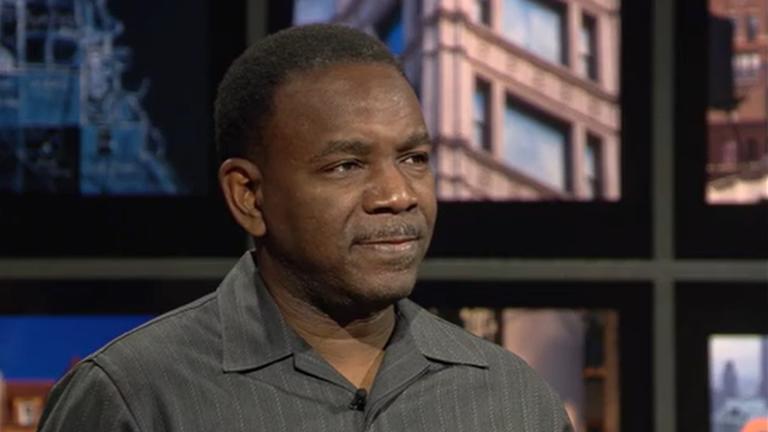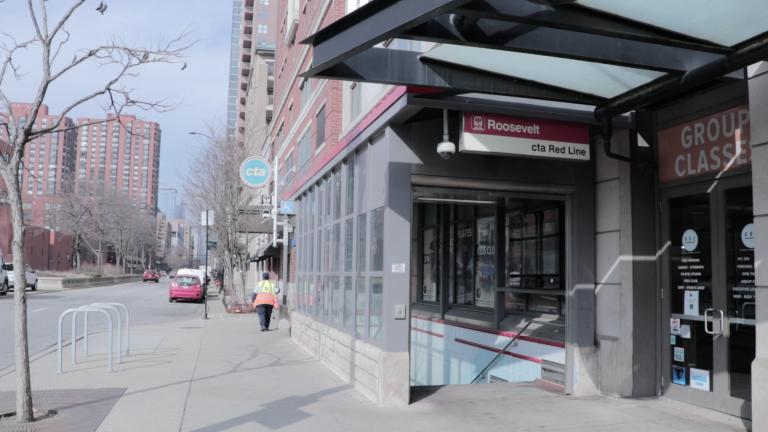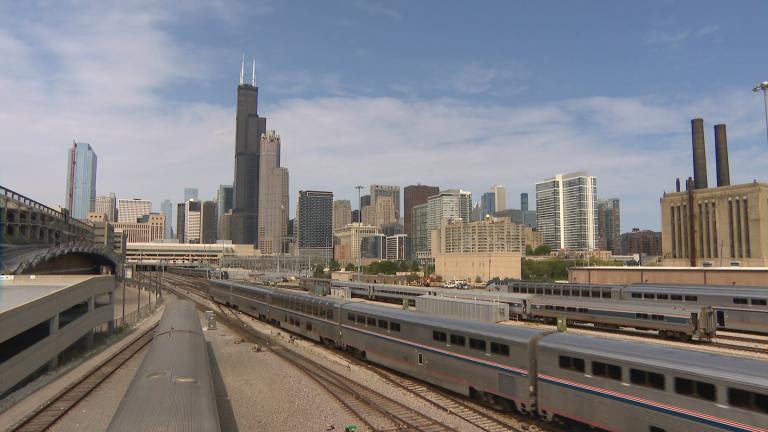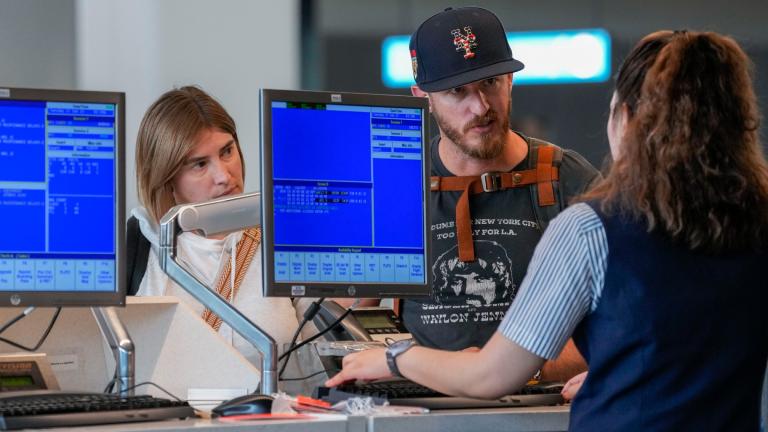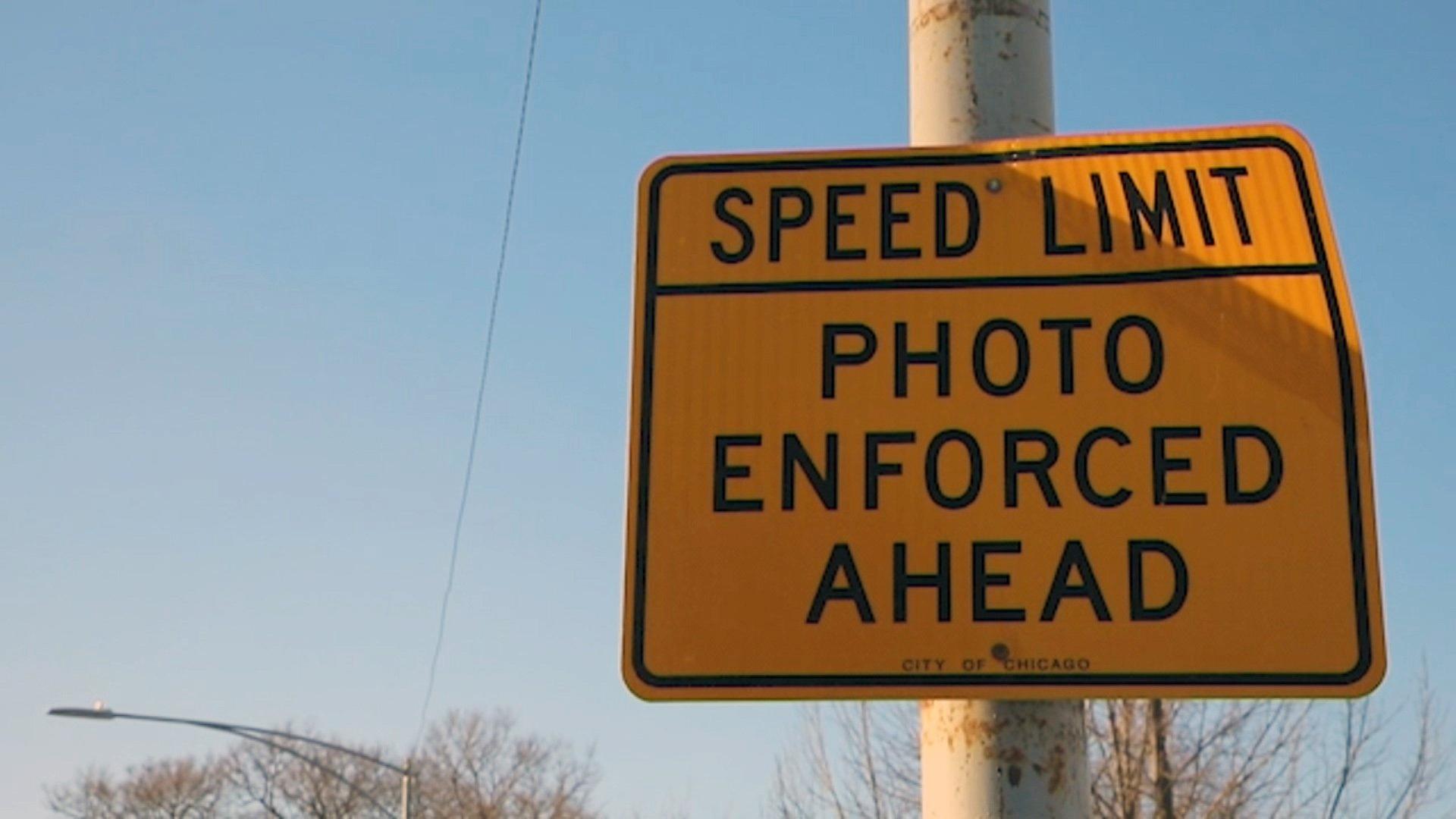 (WTTW News)
(WTTW News)
Lowering Chicago’s default speed limit from 30 to 25 miles per hour could dramatically reduce deaths and serious injuries due to traffic crashes — especially among Black and Latino residents who are disproportionately more likely to die as the result of a crash. That’s according to city officials and traffic safety advocates who spoke at a Chicago City Council subject matter hearing Wednesday.
“When a life is cut short through traffic violence, it has an impact that ripples through our community,” said Vignesh Krishnamurthy with the Chicago Department of Transportation.
After decades of decline, traffic fatalities have been climbing nationwide since 2014. Dangerous driving spiked during the COVID-19 pandemic, reaching a deadly peak in 2021. While the numbers have been on the decline in the years since, they remain stubbornly high. Advocates said reducing speed limits is a relatively easy and high-impact intervention that will protect drivers, passengers, pedestrians and cyclists alike.
City data shows Black Chicagoans are nearly four times more likely to be victims of a fatal traffic crash, with high crash areas concentrated on the South and West sides.
Advocates said there are a number of factors at play, including communities of color that have long faced disinvestment and whose residents often must travel longer distances for jobs, education and recreation. But Krishnamurthy also said speeding is a citywide problem.
“I wish I could say there were a handful of places where speeding happened and we’d go address them and be on our way,” Krishnamurthy said.
Witness after witness said the data paints a clear picture — even small reductions in speed make it likelier for someone to survive a crash.
At 30 miles per hour, someone struck by a vehicle has a 60% chance of living, according to statistics presented at the hearing by the Metropolitan Planning Council. At 20 miles per hour, that survival rate jumps to 80% or more.
The council’s Audrey Wennink added that studies show a five-miles-per-hour reduction wouldn’t have a major effect on travel times for drivers.
Victoria Barrett from the Chicago Metropolitan Agency for Planning said it’s not just dangerously high speed limits that have led to the uptick in traffic deaths. Cars in the United States have gotten wider, taller and heavier over the past decade, reducing or eliminating drivers’ ability to see pedestrians or cyclists and creating potentially deadlier vehicles. And, she added, streets with Chicago’s current 30 miles per hour default speed limit see the most fatal crashes for all road users.
Beyond just fatalities, advocates noted crashes can result in lost wages, medical debt and a higher workload for emergency responders.
Reducing speed limits should have been a priority “arguably five years ago or 10 years ago,” Barrett said, “but there are conditions on our roadways today that make this a particularly urgent issue.”
Twenty-two states have lower default speed limits than Illinois. And other cities have seen big improvements in lowering rates of traffic fatalities and injuries after lowering speed limits, advocates and officials said, including New York, Boston, Atlanta, Memphis, Seattle and San Francisco.
Advocates also said roadway design that encourages safer, slower driving can have a major impact — but that, ironically, safety measures like pedestrian bump-outs, raised crosswalks or bike lanes sometimes can’t be installed on streets with 30 miles per hour speed limits.
“Our streets are dangerous by design,” said the Active Transportation Alliance’s Amy Rynell. “We’re designing a street for a speed limit, not the other way around.”
Backers of reducing the speed limit argued that design improvements alongside slower driving are key — along with equitable enforcement aimed at changing behavior rather than increasing revenue.
“I don’t want the money,” said Ald. Daniel La Spata (1st Ward), chairman of the Committee on Pedestrian and Traffic Safety. “I would only even introduce legislation if it came with new models of enforcement that weren’t based off of monetary penalties, that were more education-based. I believe we can have less revenue and fewer traffic fatalities.”
Ald. David Moore (17th Ward) said his usual approach is to advocate for more development in neighborhoods first to improve safety outcomes, and asked for information on how many tickets Chicago police officers had issued speeders in recent years.
La Spata said there isn’t an ordinance waiting in the wings but was pleased to see most alderpeople on the committee respond favorably to the idea of lower speed limits. He also pledged robust community engagement efforts should this idea one day become law.
“I’ve met too many parents who have lost their children,” La Spata said. “I’ve met too many folks who have lost their neighbors. Doing this will save dozens of lives every year, hundreds of lives over a decade. If you don’t do it, you’ve surrendered the moral obligation to do the work, and I refuse to do that.”
Contact Nick Blumberg: [email protected] | (773) 509-5434 | @ndblumberg


